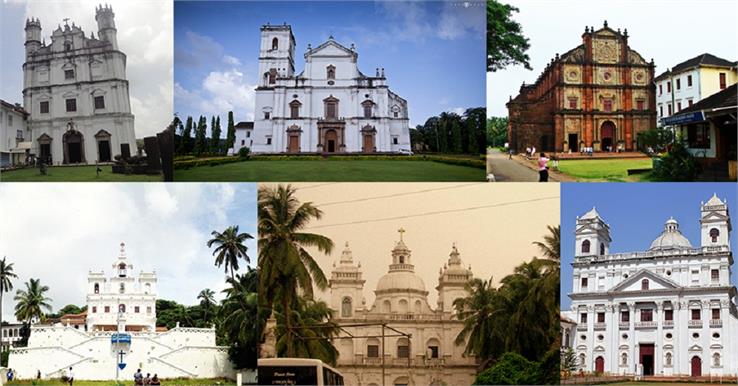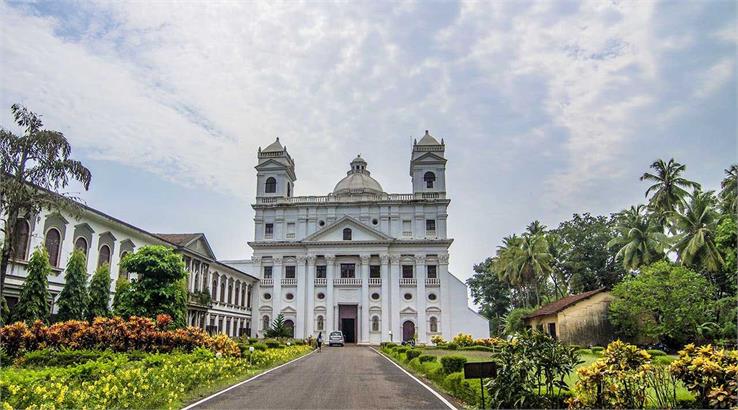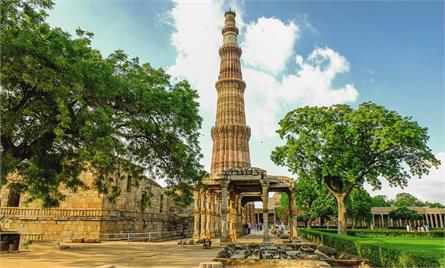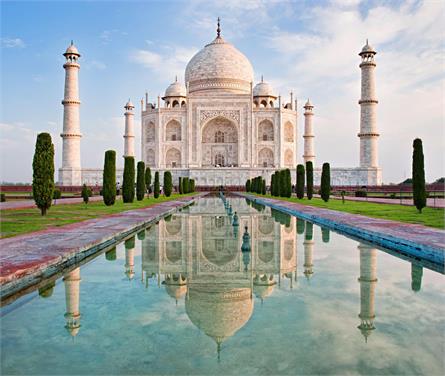"Explore The Historic Churches and Convents of Goa"

Nestled on the western coast of India, the sun-kissed state of Goa is renowned for its pristine beaches, vibrant nightlife, and rich cultural heritage. But amidst the azure waters and bustling markets lies a hidden gem that speaks of a different kind of splendor—the Churches and Convents of Goa, a UNESCO World Heritage Site. This unique blend of European and Indian architecture, a testament to Goa's colonial history, offers a captivating glimpse into the state's spiritual and cultural past.
The Churches and Convents of Goa refer to a collection of religious structures and buildings in the Indian state of Goa which hold significant historical and cultural importance. These churches and convents are known for their unique blend of Indian and European architectural styles, reflecting the region's rich history of Portuguese colonial rule. The ensemble of these churches and convents has been designated a UNESCO World Heritage Site in 1986 due to their historical and architectural significance.
Also Read: India's Cultural and Natural Treasures-UNESCO World Heritage Sites
Formation of the Churches and Convents of Goa | Convents history
The Formation of the churches and convents of Goa is a fascinating tale that provides insight into the region's rich history. These religious institutions played a crucial role in spreading Christianity throughout the area and were instrumental in shaping the culture of Goa. The construction of these buildings was no easy feat, and it took a great deal of effort from the local population to bring them to fruition. Through the centuries, these religious structures have stood as a testament to the faith and dedication of the people of Goa, and they continue to be a source of inspiration and wonder to this day. The details of the past of churches and convents of Goa is given below.
1. Portuguese Arrival
In 1510, the Portuguese explorer Afonso de Albuquerque captured the city of Goa from the Bijapur Sultanate, establishing Portuguese colonial rule in the region. With this conquest, the Portuguese brought Christianity to Goa and began constructing churches and religious institutions.
2. Expansion of Christianity
Over the next few centuries, Christianity spread rapidly in Goa. The Portuguese colonial administration played a crucial role in this expansion, often coercing the local population to convert to Christianity. As a result, numerous churches and convents were built to serve the growing Christian community.
3. Architectural Fusion
The architecture of these churches and convents is a remarkable fusion of European and Indian styles. Portuguese architects and builders incorporated elements of Manueline, Baroque, and Renaissance styles into the structures, while also incorporating local materials and craftsmanship. This blending of styles is often referred to as "Indo-Portuguese" or "Luso-Indian" architecture.
Also Read: Chhatrapati Shivaji Terminus
4. Decline and Restoration
As Portuguese colonial influence waned in the 20th century, some of these structures fell into disrepair. However, efforts were made to restore and preserve these churches and convents. In 1986, UNESCO recognized their cultural significance and designated them as a World Heritage Site, ensuring their protection and conservation.
5. Cultural Significance
Beyond their architectural beauty, these churches and convents hold immense cultural significance for the people of Goa. They serve as important religious and cultural centers, hosting annual festivals and events that attract pilgrims and tourists alike.
The Churches and Convents of Goa are a testament to the enduring legacy of Portuguese colonialism in India and the unique architectural and cultural heritage that emerged from this period. They remain cherished landmarks and symbols of Goa's rich history and religious diversity.
Famous churches and convents in Goa or Religious landmarks in Goa
Some of the most famous churches and convents that still exist today include-
1. Basilica of Bom Jesus
One of the most iconic churches in Goa, the Basilica of Bom Jesus is a masterclass in baroque architecture. Its grand facade, intricate interiors, and the resting place of St. Francis Xavier make it a pilgrimage site for Catholics worldwide. The basilica's unique feature is the preserved body of the saint, displayed once every decade.
Also Read: Buddhist Monuments at Sanchi
2. Se Cathedral
Dominating the skyline of Old Goa, the Se Cathedral is a testament to Portuguese grandeur. It is dedicated to St. Catherine and is famous for its giant golden bell, said to be one of the largest in Asia. The interior boasts exquisite paintings and sculptures, depicting scenes from the life of Christ.
3. Church of St. Cajetan
This church is often compared to St. Peter's Basilica in Rome due to its Corinthian architecture. Built by Italian friars, it exudes a sense of serenity and awe. The white-washed facade and the surrounding gardens create an oasis of tranquility amidst the bustling streets.
4. Convent and Church of St. Francis of Assisi
This complex showcases the Portuguese-Manueline architectural style. The church is known for its gilded altar and stunning frescoes, while the adjoining convent houses an archaeological museum displaying relics from Goa's colonial past.
5. Church of Our Lady of the Immaculate Conception
Perched atop a hill in Panaji, the state's capital, this church is an architectural marvel with a starkly contrasting interior, decorated in an ornate baroque style. Its iconic whitewashed facade and a grand staircase leading to the entrance make it a popular spot for both tourists and worshippers.
Cultural Syncretism
Beyond their architectural beauty, the Churches and Convents of Goa also bear witness to the rich cultural and religious syncretism that characterizes the region. Goa has always been a melting pot of diverse influences, and this is reflected in the art, architecture, and rituals of these sacred structures.
One can observe Hindu and Indian motifs subtly integrated into the Christian iconography. For example, the interiors of many churches feature lotus motifs and intricate carvings reminiscent of Hindu temples. This harmonious blending of two distinct cultural traditions is a testament to the inclusivity and tolerance that have defined Goa for centuries.
Preservation and UNESCO Recognition
The preservation of these historic sites has been a joint effort by both the Indian government and international organizations, culminating in their UNESCO World Heritage Site status in 1986. This recognition has not only ensured their physical preservation but has also heightened their cultural significance on a global scale.
Today, the Churches and Convents of Goa continue to be places of worship, drawing both the faithful and curious travelers alike. The annual Feast of St. Francis Xavier, celebrated in December, attracts thousands of pilgrims from across the globe to the Basilica of Bom Jesus, showcasing the enduring spiritual relevance of these structures.
Also Read: Ajanta Caves
The Churches and Convents of Goa are a living testament to the confluence of cultures, faiths, and architectural marvels. Their recognition as a UNESCO World Heritage Site underscores their importance to Goa and the world. As you explore these sacred spaces, you can't help but feel the weight of history and the enduring spirit of Goa's cultural and religious diversity. Whether you're a history buff, an architecture enthusiast, or a seeker of spiritual solace, a visit to these heritage sites is a journey through time and a celebration of human creativity and faith.















